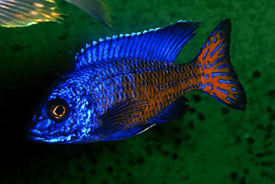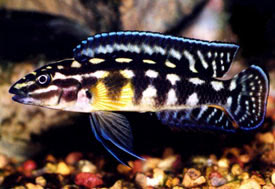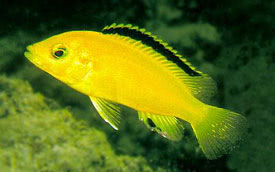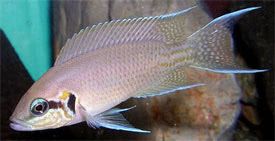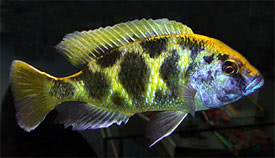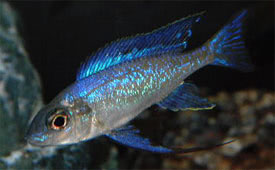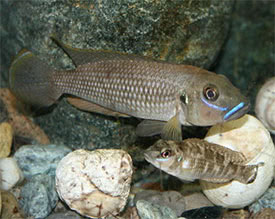
 Magyarul / Hungarian
Magyarul / Hungarian

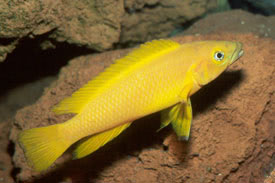
- Scientific name: Neolamprologus leleupi
- Common name: Lemon Cichlid
- Group: Cichlids
- Habitat: Eastern Africa; Lake Tanganyika
- Size: 10 cm.
- Biotope: Rocky parts of Lake Tanganyika.
- Social behavior: A peaceful fish that can be combined with other Lake Tanganyika Cichlids. Males may become aggressive during the spawning season towards unreceptive or immature females. Pairs are formed only during the spawning season.
- Diet: Live, crustaceans, insect larvae, aquatic insects, large flakes, pellets. This fish must be fed a varied diet to bring out its beautiful colors.
- Breeding: Easy
- Tank: Minimum 100 litres
- Population: 1 male and 2 females for 120 litres
- Decoration: Construct rock formations having caves and tunnels. Leave open swimming areas and use hardy plants for decorations. Use a fine gravel or preferably, coral sand substrate.
- Temperature: 25-26°C
- pH: 7,5-9
- Hardness: 8-25 NK°
- Lifespan: 8-10 years
Description: An elongated cichlid with a characteristic bright yellow color and a set of large lips. The caudal fin is fan-shaped. The lips are a dark yellow, and above the upper lip is a fine green line. This line extends along the lip to just below the eye.
Difficult to distinguish between the sexes; older males often develop a hump on their forehead.
Use a breeding tank with a single pair. Be sure that the pair is compatible and provide caves and crevices. Use water with a pH from 7.5-8.2, 8-14 dH, and a temperature to 86°F (30°C). As many as 150 eggs are laid on the ceiling of a previously cleaned cave. The eggs are carefully guarded by the female, while the male watches over the territory. The fry hatch after 3-4 days and feed off their egg sacs for another three days. The young are moved to a pit inside the cave. After five to six more days, the fry are free-swimming and can be fed on Artemia nauplii, Cyclops nauplii, and crushed dry foods. The fry are very sensitive to the build-up of toxic compounds, and are susceptible to bacteria diseases.





